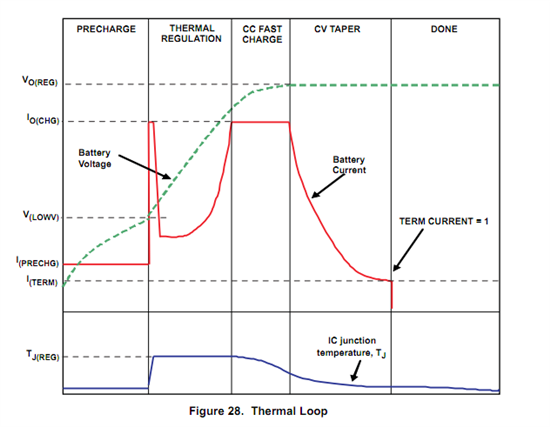Question :
The TPS6507x datasheet does not explain the operation of the Power Path in detail.
Can you please explain how the Power Path is regulating the Charge Current voltage under der following conditions below?
Case 1: USB (or AC) input present and Battery is not
Case 2: USB (or AC) input present, Battery is present and fully charged
Case 3: USB input present, Battery is present and is not fully charged and SYS load requires less than 500mA (example for this case 300mA)
Case 4: USB input is present, Battery is present and is not fully charged and SYS load requires more than 500mA (example for this case 800mA).
This is calledSupplement mode.
Case 5: USB is present, Battery is present and is not fully charged and combined SYS load and battery charge current require more current than the USB
source can supply but less current than the USB switch is programmed to deliver. This is DPPM mode. As an example, use the following
conditions prior to entering DPPM mode. Assume the USB is limited to 500mA, the TPS65073 USB switch is programmed to deliver
up to 1000mA, and the load requires 200mA, and the battery charging current is 200mA


